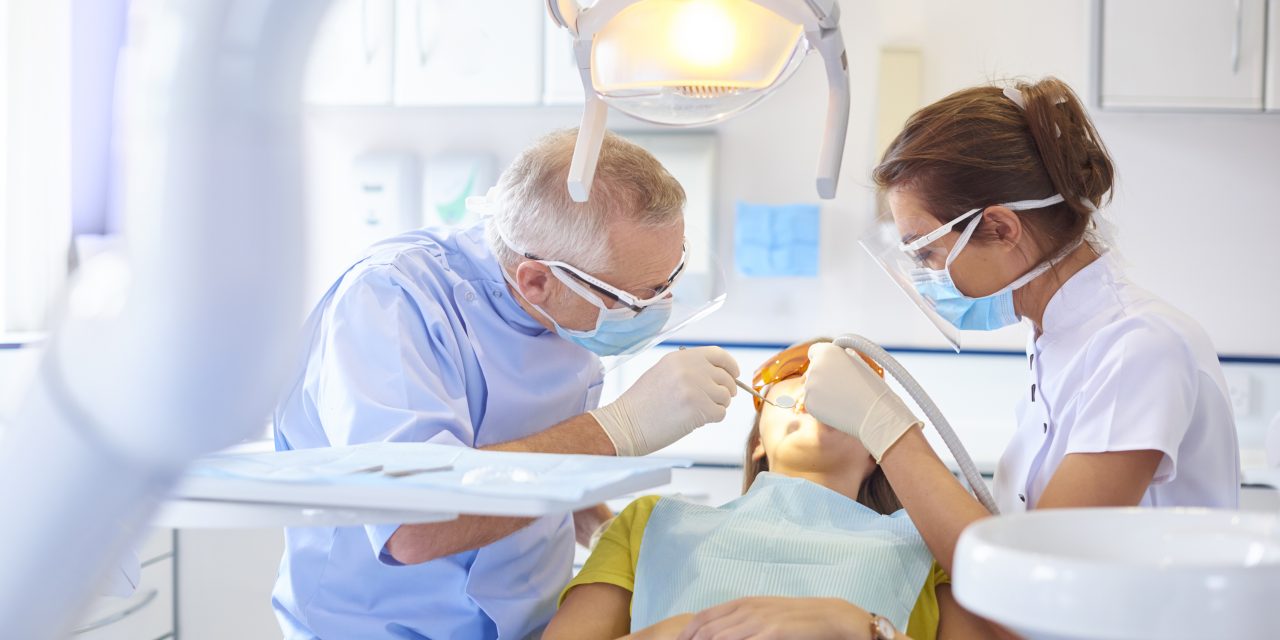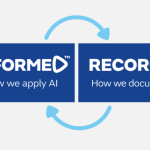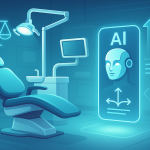Dentistry is no longer only characterised by the familiar dental instruments, white lab coats, and the noise of dental drills resounding throughout the clinic. In the digital age, dentistry has undergone a major transformation through innovative technologies and progressive approaches to oral health. These developments have drastically improved how dental professionals approach the prevention, diagnosis, and treatment of conditions. Technology enables dentists to provide better care and a more comfortable dental experience. Technologies such as digital imaging, virtual reality (VR), Artificial Intelligence (AI), 3D printing, and robotics in the dental field have helped dentists reach a precise diagnosis and provide better care to their patients with more predictable outcomes and improved prognoses. This article will review how these technologies combine to make dentistry less guesswork and more data and technology-oriented, leading to improved oral healthcare.
Virtual Reality
Virtual reality is a computer-generated artificial environment transmitted to the user by a special VR headset. Virtual reality can lower anxiety in dental patients. Soothing simulations played on the headset distract the patients from the ongoing dental work, making their visit more pleasant and allowing the dentist to work without interruptions. It is helpful when treating paediatric patients who are more anxious than adult patients. Virtual reality has provided a breakthrough in dental education; dental students can practice dental procedures freely in virtual dental simulations without endangering human beings. VR eliminates the risk of iatrogenic damage to nerves, vessels and other vital structures. [1] Even expert dental professionals use this technology in complex procedures such as implant surgeries. Virtual reality systems guide dentists when positioning dental implants at the correct anatomical location, avoiding sinuses and nerves. Pinpoint measurements help dentists to locate implants at the proper inter-implant & implant-tooth distance. VR reduces guesswork in dentistry, reducing human error and improving implant success. [2]
Artificial Intelligence
Artificial Intelligence (AI) has captured the popular imagination in recent years and is now influencing the field of dentistry as well. AI has modernised dental healthcare by providing accurate and timely diagnoses, advising treatment plans, and unprecedentedly predicting prognoses. These advancements improve the way patients perceive and approach dental care. AI’s capacity to analyse “big data” sourced from dental radiographs, particularly CBCT scans (Cone Beam Computed Tomography), has enabled it to detect patterns and markers that help it diagnose many dental conditions such as caries, periodontal disease & even cysts and tumours. [6] Through its complex deep learning algorithms, AI detects and identifies budding diseases like cancers that may go unnoticed by the human eye. Timely diagnoses like these empower dentists to take preventive measures, possibly stopping disease progression and saving the patient a lot of pain and money.
Artificial Intelligence helps dentists in complex dental fields such as orthodontics: it can foresee tooth movements, assisting dentists in determining the force to be applied when using appliances. Dentists can show patients expected results enabling better-informed decisions about their treatment options.[8] Endodontics is made more predictable by AI, which determines the difficulty index of a root canal treatment, helping dentists make a better decision about treatment outcome, relaying it to the patient, and allowing them realistic expectations about endodontic treatment results. [7]
Digital Dentistry
Dentistry is an amalgamation of art and medical science. It involves many aspects of art, such as material handling and manipulation. A leading example is of impression-taking by materials such as silicones and hydrocolloids. However, this conventional technique is uncomfortable as it induces gagging in some patients and the replicas made could be more accurate as these materials undergo dimensional changes with time. Technological advancements have rid dentistry of this hassle by introducing a 3D intraoral scanner. This handheld device scans the oral cavity, producing an accurate & detailed 3-dimensional copy of it, overcoming the material disadvantages and patient discomfort associated with conventional impression techniques. The result is improved patient acceptance and experience.
The 3D oral scanner gained wider usage during the COVID-19 Pandemic when its use increased to limit patient-dentist interaction, reducing virus transmission while providing an accurate image of oral tissues. 3D scanners eliminate potential problems that can arise with conventional impressions, reduce chair time, and simplify the procedure for dentists and patients alike. [9] A replica of the oral tissues produced by this 3D scanner empowers technicians to build a perfect individualised prosthesis for the patient. This prosthesis is manufactured by Computer-Aided Design and Manufacture (CAD-CAM) with an unmatched fit and function and reduced material wastage using additive manufacturing techniques instead of conventional subtractive methods. CAD-CAM technique has drastically reduced waiting times and given rise to single-visit dentistry. During a single appointment, trained dentists can produce restorations like crowns, bridges, veneers and dentures. This breakthrough increases treatment acceptability in patients who can’t afford multiple visits for various reasons.
Robotics in Dentistry
Robotics is ushering in a new era in dentistry and revamping oral healthcare delivery. Robots provide precision, reducing human errors. Many semi-autonomous robots assist oral surgeons with implant surgeries and endodontic treatments. Robots that perform traditional lab work like crown preps, teeth set up on dentures, and archwire bending speed up the production process, giving more accurate results by eliminating human error. Autonomous robots with integrated AI have been introduced into the market and can perform complex dental procedures, such as root canal treatments. But only time will tell how well dentists and patients accept them and how well they perform in the real world.
Teledentistry
High-quality dental facilities and practitioners are usually accessible in urban areas. Access to quality oral healthcare between rural and urban areas is needed. Teledentistry is a means to bridge this gap and provide healthcare to people in remote areas. [3] Teledentistry was used widely during the COVID-19 Pandemic to prevent virus transmission while providing consultation with the aim of screening for diseases and preventive oral healthcare. More comprehensive 4G and 5G network coverage will see increased use of teledentistry.
3D printers
The emergence of 3D printing has revolutionised the production of dental appliances and prostheses. 3D printing resulted in a significant shift from time-consuming, complex procedures of manual labour to the quick and easy conversion of digital designs into tangible dental appliances. The process has improved prosthodontics by speeding up the production of crowns, bridges & dentures, making one-visit dentistry possible. [4] 3D printing has also facilitated complex dental procedures such as implants by producing guide splints, which aid in the placement of implants with unmatched precision. 3D printers have accelerated orthodontics by quickly making custom aligners, reducing waiting times and improving patient satisfaction.
Internet of Dental Things
Internet of Dental Things means using physical devices, which are a part of everyday life, to collect data about habits and usage patterns to analyse and improve them. In dentistry, its primarily implemented by advanced electric toothbrushes that collect data about patients’ brushing habits, technique, duration and areas of brushing. A toothbrush can be connected to a smartphone via Bluetooth, displaying the data in an associated app. It can have in-built sensors that sense if the patient is brushing too vigorously and informs them, helping prevent gum recession. As a result, dentists can monitor, analyse and suggest improved brushing techniques, drastically enhancing plaque removal and the patient’s efficiency, reducing the incidence of diseases such as caries and periodontal disease. Smartphone App also gives brushing recommendations, suggesting which areas to focus on more during brushing and motivating them to brush regularly.
Cloud Computing
Cloud computing has removed the need for paper patient records making for easy storage and retrieval of digital patient records. In addition, cloud-based digital records enable remotely located dentists to collaborate on a case. Online appointment systems have also streamlined workflow, reducing the agony of waiting times for patients.
Conclusion:
As technology continues to impact dentistry, the dental experience will evolve for both stakeholders. Accurate diagnoses, precise treatments, and improved treatment outcomes will result in a greater level of satisfaction for patients, ensuring profitability and work safety for dentists. Though technology can’t wholly replace dental professionals with the help of Teledentistry, Robotics, Artificial Intelligence & Virtual Reality, Dentistry is ready to unlock a new era in oral healthcare, which ensures a healthy and glowing smile for people globally.
References
[1] Roy E., Bakr M.M., George R. The need for virtual reality simulators in dental education: A review. Saudi Dent. J. 2017;29:41–47
[2] Ayoub A., Pulijala Y. The application of virtual reality and augmented reality in Oral & Maxillofacial Surgery. BMC Oral Health. 2019;19:238
[3] Khan S.A., Omar H. Teledentistry in practice: A literature review. Telemed. E-Health. 2013;19:565–567. doi: 10.1089/TMJ.2012.0200
[4] Ma B., Park T., Chun I., Yun K. The accuracy of a 3D printing surgical guide is determined by CBCT and model analysis. J. Adv. Prosthodont. 2018;10:279–285
[5] Golob Deeb J., Bencharit S., Carrico C.K., Lukic M., Hawkins D., Rener-Sitar K., Deeb G.R. Exploring training dental implant placement using computer-guided implant navigation system for predoctoral students: A pilot study. Eur. J. Dent. Educ. 2019;23:415–423
[6] Hung K., Yeung AW K., Tanaka R., Bornstein M.M. Current Applications, Opportunities, and Limitations of AI for 3D Imaging in Dental Research and Practice. Int. J. Environ. Res. Public Health. 2020;17:4424
[7] Mallishery S., Chhatpar P., Banga K.S., Shah T., Gupta P. The precision of case difficulty and referral decisions: An innovative automated approach. Clin. Oral Investig. 2019;13:1–7
[8] Kunz F., Stellzig-Eisenhauer A., Zeman F., Boldt J. Artificial intelligence in orthodontics. J. Orofac. Orthop. Fortschr. Der Kieferorthopädie. 2020;81:52–68
[9] Mangano F., Gandolfi A., Luongo G., Logozzo S. Intraoral scanners in dentistry: A review of the current literature. BMC Oral Health. 2017;17:149












